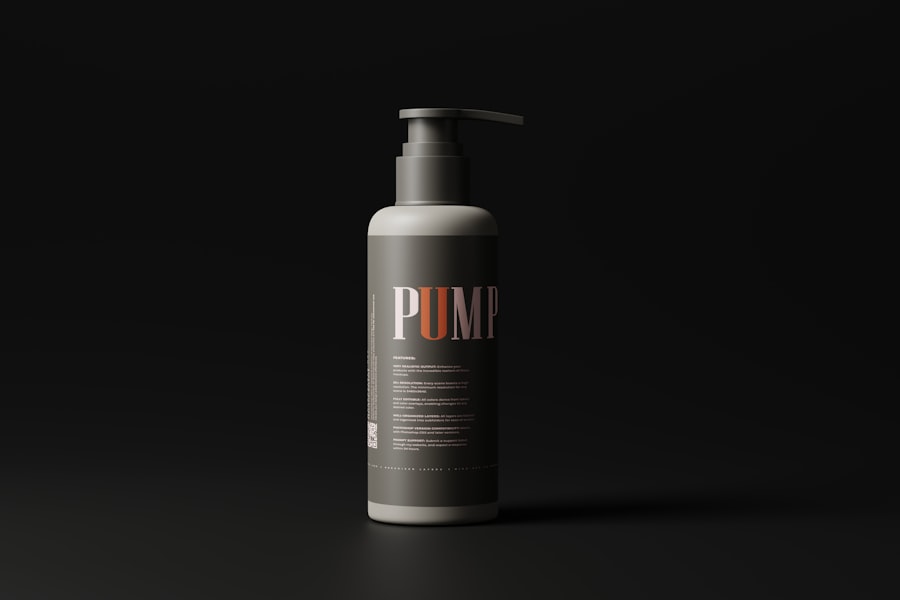Laser hair removal is a popular cosmetic procedure that utilizes concentrated beams of light to target and eliminate unwanted hair. The technology works by emitting a specific wavelength of light that is absorbed by the pigment in the hair follicles. This absorption generates heat, which damages the follicle and inhibits future hair growth.
As you consider this option, it’s essential to understand how the process works and what to expect during your treatment sessions. The procedure is typically performed in a series of sessions, as hair grows in cycles, and not all hair is in the same growth phase at any given time. This means that multiple treatments are necessary to achieve optimal results.
You may find that the number of sessions required varies based on factors such as your hair color, skin type, and the area being treated. Generally, individuals with darker hair and lighter skin tend to see the best results, as the contrast allows the laser to target the hair more effectively.
Key Takeaways
- Laser hair removal targets hair follicles with concentrated light to inhibit future hair growth
- Before laser hair removal, avoid sun exposure and stop using hair removal methods that disturb the hair follicle
- Immediately after treatment, apply ice packs or cooling gels to soothe any discomfort and reduce redness
- Long-term aftercare involves protecting treated areas from sun exposure and using gentle skincare products
- Side effects like redness and swelling can be managed with over-the-counter creams and cold compresses
Preparing for Laser Hair Removal Aftercare
Before undergoing laser hair removal, it’s crucial to prepare adequately for the aftercare process. One of the first steps is to consult with your practitioner about any medications or supplements you are currently taking.
Your practitioner may advise you to avoid specific medications, such as blood thinners or certain anti-inflammatory drugs, in the days leading up to your appointment. In addition to discussing medications, you should also avoid sun exposure before your treatment. Tanning, whether from the sun or tanning beds, can increase the risk of complications and may affect the efficacy of the laser treatment.
If you have recently tanned, it’s advisable to wait until your skin returns to its natural tone before proceeding with laser hair removal. Furthermore, you should refrain from waxing or plucking hair in the area to be treated for at least four weeks prior to your session, as these methods can disrupt the hair growth cycle and reduce the effectiveness of the laser.
Immediate Post-Treatment Care
After your laser hair removal session, you may experience some immediate side effects, such as redness, swelling, or a sensation similar to a mild sunburn in the treated area. It’s essential to follow your practitioner’s aftercare instructions closely to ensure proper healing and minimize discomfort. Applying a cool compress can help soothe any irritation and reduce swelling.
You might also be advised to use aloe vera gel or a gentle moisturizer to keep the skin hydrated and promote healing. Avoiding hot showers, saunas, and intense workouts for at least 24 hours post-treatment is also recommended. These activities can exacerbate irritation and increase blood flow to the treated area, potentially leading to more pronounced side effects.
Instead, opt for lukewarm showers and gentle activities that won’t cause excessive sweating or friction on your skin. Remember that your skin is sensitive after treatment, so treating it with care will help you achieve the best results.
Long-Term Aftercare Routine
| Long-Term Aftercare Routine Metrics | Values |
|---|---|
| Frequency of Follow-up Appointments | Monthly |
| Medication Adherence Rate | 85% |
| Physical Activity Level | 3 times per week |
| Dietary Compliance | 80% |
Establishing a long-term aftercare routine is vital for maintaining the results of your laser hair removal treatment. One of the most important aspects of this routine is keeping the treated area clean and moisturized. Use a gentle cleanser that won’t irritate your skin, and apply a fragrance-free moisturizer regularly to keep your skin hydrated.
This will not only help with healing but also enhance your overall skin texture. In addition to maintaining cleanliness and hydration, it’s crucial to protect your skin from sun exposure in the long term. UV rays can cause pigmentation changes in treated areas, which may lead to unwanted darkening or lightening of the skin.
Always apply a broad-spectrum sunscreen with an SPF of at least 30 before going outdoors, even on cloudy days. Reapplying sunscreen every two hours is essential if you’re spending extended periods outside. By prioritizing sun protection, you can help ensure that your skin remains healthy and that your laser hair removal results are preserved.
Managing Side Effects
While many individuals tolerate laser hair removal well, some may experience side effects that require management. Common side effects include redness, swelling, and minor discomfort in the treated area. If you find that these symptoms persist or worsen after your treatment, it’s essential to reach out to your practitioner for guidance.
They may recommend over-the-counter pain relief options or topical treatments to alleviate discomfort. In some cases, you might experience more severe side effects such as blistering or changes in skin pigmentation. If you notice any unusual symptoms or if your skin does not seem to be healing properly, do not hesitate to contact your healthcare provider.
They can assess your condition and provide appropriate recommendations for care. Being proactive about managing side effects will help ensure a smoother recovery process and better overall results from your laser hair removal treatment.
Protecting Treated Areas

Protecting the treated areas of your skin is crucial for both healing and maintaining results after laser hair removal. As mentioned earlier, sun exposure can lead to complications such as pigmentation changes or irritation. In addition to using sunscreen daily, consider wearing protective clothing when spending time outdoors.
Lightweight long sleeves and wide-brimmed hats can provide an extra layer of protection against harmful UV rays. Moreover, avoid using harsh skincare products on treated areas for at least a week following your treatment. This includes exfoliants, retinoids, and products containing alcohol or fragrances that could irritate sensitive skin.
Instead, opt for gentle cleansers and soothing moisturizers that will help maintain your skin’s integrity while it heals. By taking these precautions, you can significantly reduce the risk of complications and ensure that your skin remains healthy and vibrant.
Maintaining Results
To maintain the results of your laser hair removal treatment over time, regular follow-up sessions may be necessary. Many practitioners recommend maintenance treatments every six months to a year after completing your initial series of sessions. These touch-ups help address any remaining hair follicles that may have been missed during previous treatments or those that have entered a new growth phase since your last session.
In addition to scheduling maintenance appointments, it’s essential to continue following a consistent skincare routine tailored to your needs. This includes keeping the treated areas clean and moisturized while protecting them from sun exposure. If you notice any new hair growth between sessions, resist the urge to wax or pluck; instead, consult with your practitioner about the best course of action for managing this growth without disrupting your treatment plan.
Additional Tips for Successful Aftercare
Successful aftercare goes beyond just following instructions; it involves being proactive about your skin’s health and well-being. One helpful tip is to keep a journal documenting your treatments and any side effects you experience along the way.
Additionally, consider incorporating hydrating foods into your diet post-treatment. Foods rich in antioxidants and vitamins can support skin health from within, promoting healing and enhancing overall results. Staying well-hydrated by drinking plenty of water is also essential for maintaining healthy skin throughout the aftercare process.
By understanding laser hair removal and committing to proper aftercare practices, you can enjoy smooth skin with minimal maintenance for years to come. Remember that each person’s experience may vary; therefore, staying informed and communicating openly with your practitioner will help ensure that you achieve the best possible outcomes from your treatments.
After undergoing laser hair removal treatment, it is crucial to follow proper aftercare instructions to ensure optimal results and minimize any potential side effects. One helpful resource for learning more about aftercare tips is the article on inlaserhairremoval.com. This article provides valuable information on how to care for your skin post-treatment, including avoiding sun exposure, using gentle skincare products, and staying hydrated. By following these guidelines, you can help maintain smooth, hair-free skin for longer periods of time. For more information on laser hair removal treatments or to schedule a consultation, visit inlaserhairremoval.com.
FAQs
What is aftercare after laser hair removal?
Aftercare after laser hair removal refers to the steps and precautions that should be taken following a laser hair removal treatment to ensure proper healing and optimal results.
Why is aftercare important after laser hair removal?
Aftercare is important after laser hair removal to minimize the risk of complications such as skin irritation, infection, or hyperpigmentation, and to promote the best possible results from the treatment.
What are some common aftercare instructions for laser hair removal?
Common aftercare instructions for laser hair removal may include avoiding sun exposure, using gentle skincare products, avoiding hot showers and baths, and avoiding activities that may cause excessive sweating.
How long does aftercare after laser hair removal typically last?
Aftercare after laser hair removal typically lasts for a few days to a few weeks, depending on the individual’s skin type and the intensity of the treatment.
Are there any specific products recommended for aftercare after laser hair removal?
Some skincare products that may be recommended for aftercare after laser hair removal include gentle cleansers, moisturizers, and sunscreen with a high SPF to protect the treated area from sun damage.
What are some common side effects of laser hair removal and how can aftercare help manage them?
Common side effects of laser hair removal may include redness, swelling, and mild discomfort. Aftercare can help manage these side effects by soothing the skin, keeping it clean and protected, and avoiding activities that may exacerbate the symptoms.






